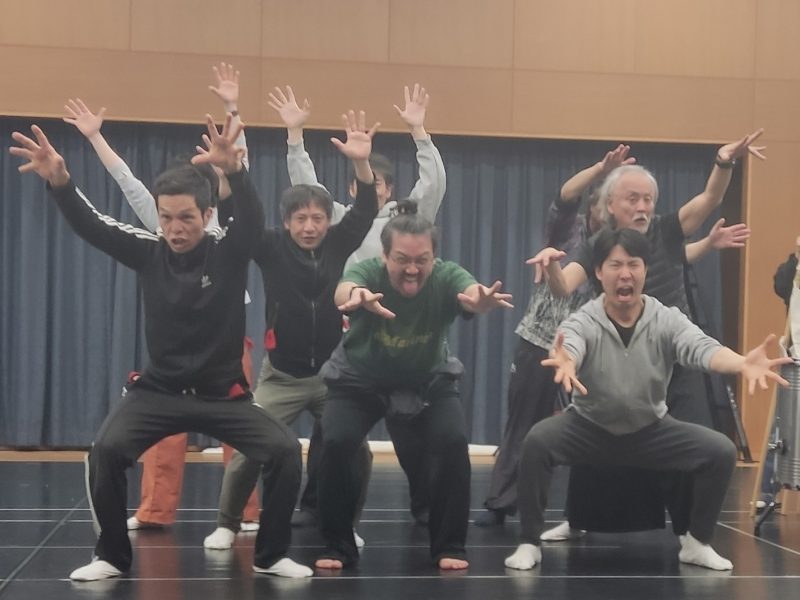<French: Click here><Japanese: Click here>
Kojiki Ep.1, Yamata no Orochi
To better understand the work of SPAC actors, observing from the outside is interesting, but observing from the inside by taking part in a performance with them is even more revealing. One of the big questions I asked myself was : what does an actor feel on stage? Indeed, in many documents I have read, Miyagi stated that SPAC actors, while performing, could feel the energy of the dead. Just like the apparition plays in Noh theater, actors could become vessels, allowing the souls haunting the space to relive difficult moments of their past lives or simply share a good moment with the living to soothe them and thus reach paradise. This was something I wanted to experience—I wanted to know if I, too, could feel the energy of an invisible presence.
On the other hand, speaking Japanese is not easy for me, given that I have only been learning it for two and a half years, that Japanese has a grammatical structure very different from French, and that in France, I rarely have the opportunity to speak with native Japanese speakers. But as I have already said, in theater, there are other ways to communicate. By participating as a musician, I wanted to try engaging in dialogue with the actors in a different way.
I also thought it would be interesting, as a foreigner, to take part in telling this Japanese legend, giving it, in some way, a more universal dimension. Indeed, it is a myth that is part of Japanese folklore, but I believe it is not reserved for the Japanese—that is, foreigners also have the right to listen to this story and participate in its transmission.
So, I asked for permission to take part in the performance of Kojiki, and Miyagi granted it to me.
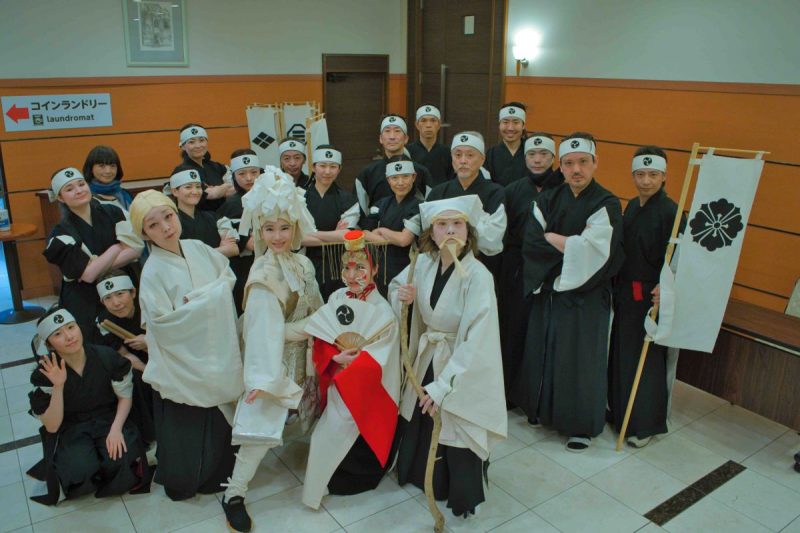
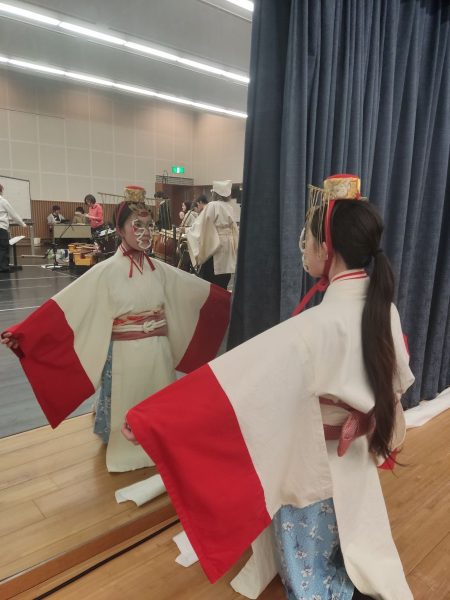 We had only three days for rehearsals, which is really very short. I was impressed by the speed at which the actors worked. At the beginning, we worked separately: the “movers” tried to replicate movements in front of a mirror using a video of a past performance; the “speakers” practiced their speech rhythms and intonations in a circle at the other end of the room; and the musicians, for their part, learned the score and how to master their instruments with the help of the composer (Hiroko-san).
We had only three days for rehearsals, which is really very short. I was impressed by the speed at which the actors worked. At the beginning, we worked separately: the “movers” tried to replicate movements in front of a mirror using a video of a past performance; the “speakers” practiced their speech rhythms and intonations in a circle at the other end of the room; and the musicians, for their part, learned the score and how to master their instruments with the help of the composer (Hiroko-san).
It was quite difficult for me to follow the instructions of the musical director at the start of rehearsals because she spoke very fast, and I had trouble navigating the play (even though I had translated it into French to understand it well).
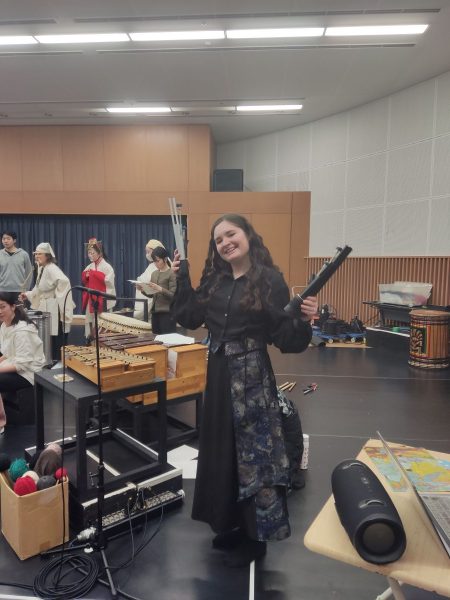 I was given an instrument I had never seen before, but it was very simple to use and had a beautiful sound: “the handbell”.
I was given an instrument I had never seen before, but it was very simple to use and had a beautiful sound: “the handbell”.
Even though I struggled to understand the instructions, thanks to the music of the whole group, the score became instinctive. I was even surprised to find myself, at certain moments, using my instrument instead of words to communicate. Twice, when my name was called for instructions, I instinctively responded with my instrument instead of saying “yes.”
Then, little by little, the three groups began to come together until they unified. It was quite amusing to see, by the end of rehearsals, an automatic connection forming between the three groups. For example, if the speakers heard the musicians’ music, even when they were not performing, they would automatically start reciting their lines.
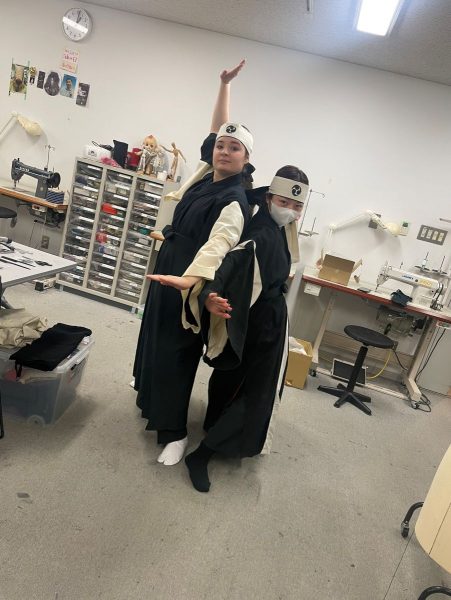 In France, I try to see as many performances as possible. On average, I go to the theater once or twice a week (thanks to my university, I can buy discounted tickets). However, despite the many performances I have seen, I have rarely seen costumes as beautiful as those in SPAC productions. So, I was very happy to wear one. Perhaps, for the Japanese, it is a simple costume, but it was the first time I had ever worn such an outfit. And I can say that the feeling is very different.
In France, I try to see as many performances as possible. On average, I go to the theater once or twice a week (thanks to my university, I can buy discounted tickets). However, despite the many performances I have seen, I have rarely seen costumes as beautiful as those in SPAC productions. So, I was very happy to wear one. Perhaps, for the Japanese, it is a simple costume, but it was the first time I had ever worn such an outfit. And I can say that the feeling is very different.
Indeed, in France, actors often perform in black T-shirts or everyday clothes, even in classical plays, as it looks more modern and is much cheaper. Alternatively, they wear historical costumes, which generally lack creativity due to a focus on realism. But I find that a costume like this adds power. Our body is guided by the movement of the fabric, which gives more energy to the gestures. The costume affects posture and movement—it is part of the performance, not just an aesthetic element.
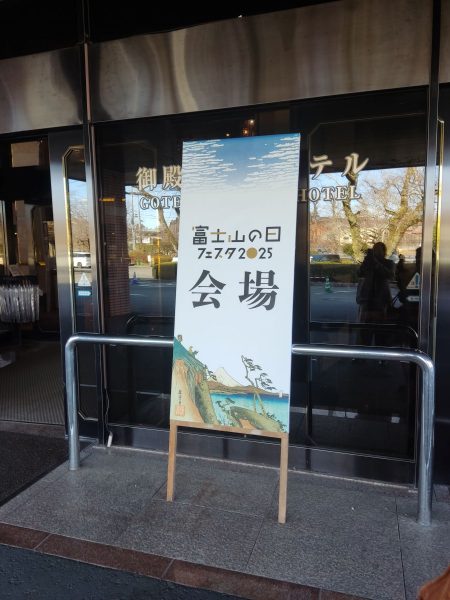 We performed the play for Mount Fuji Day in a luxury hotel. The backdrop was a glass wall overlooking nature. With natural light, we entered the stage as silhouettes, like shadow puppets.
We performed the play for Mount Fuji Day in a luxury hotel. The backdrop was a glass wall overlooking nature. With natural light, we entered the stage as silhouettes, like shadow puppets.
It was my first time performing in Japan, and as I stepped onto the stage, I thought about what six-year-old Janelle, who had fallen in love with theater after stepping on stage for the first time, would have thought. What would she have felt if someone had told her that one day she would be performing on the other side of the world?
To make the most of my experience, I paid close attention to every detail on stage. But during the performance, I did not feel the energy of the dead as I had hoped. Perhaps because I am not Japanese and I am an atheist. I think I need more time to be able to sense it. However, I did feel the energy of the living. I could sense the strength of the group, the power of the bodies resonating with the vibrations of the instruments and voices.
It was truly fascinating to feel part of a group, to tell a story together, to feel this sense of listening and shared presence.
In France—this is just my personal impression—I feel that actors are trapped in their own inner world. When I performed in France, even with many other actors, I felt alone. The sense of connection between actors is not as strong. For example, when I perform a dialogue with someone, I feel like they hear me, but they don’t truly listen because they are too focused on their own performance.
Feeling alone on a theater stage is terrifying: it leads to memory lapses, mistakes, shaking, and a loss of the joy of acting. But with SPAC, for the first time in a long time, I felt no stress at all—precisely because I did not feel alone. I was carried by everyone, and in turn, I carried them. I was able to truly enjoy participating. And I hope the audience also felt this connection and had a wonderful time.
I hope to be able to perform with SPAC again. I have learned so much, and I still have so much more to learn from them.
Janelle RIABI
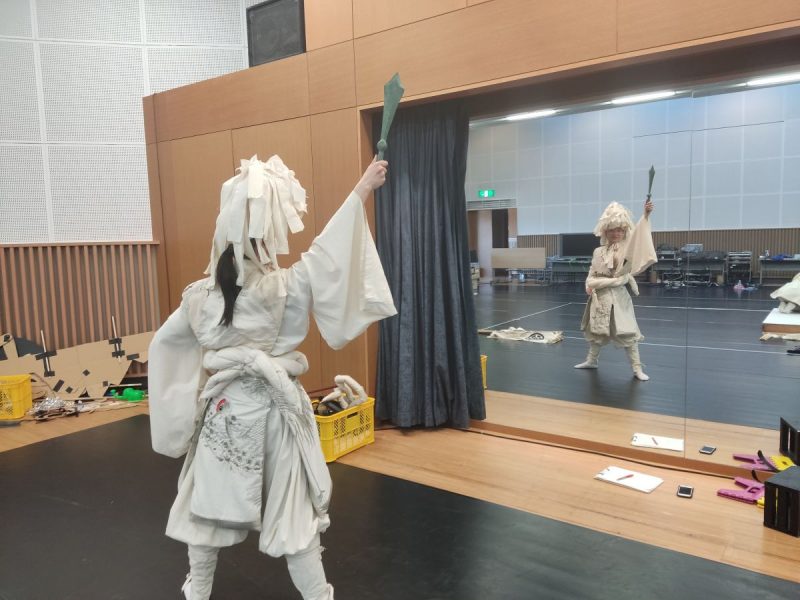


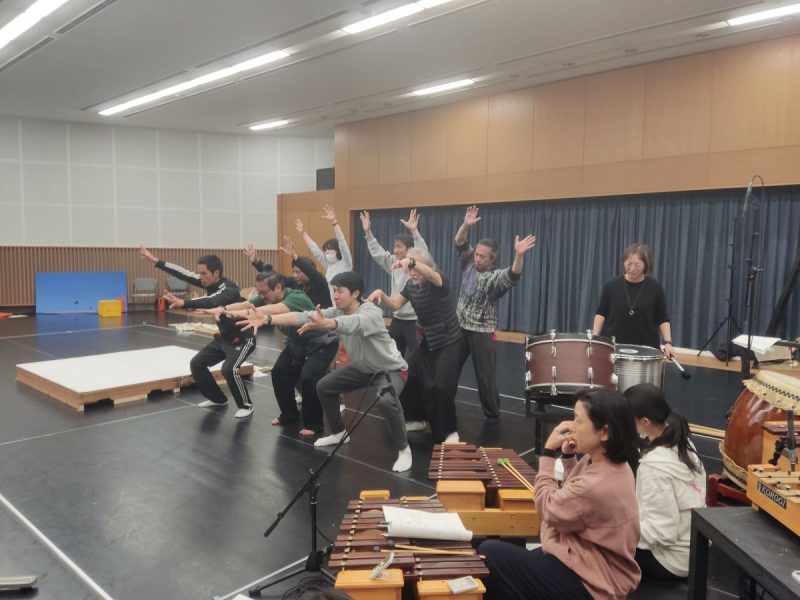
Ramayana
https://festival-shizuoka.jp/en/program/ramayana/
Dates: 29 April at 18:45, 2 May at 18:45, 3 May at 18:45, 4 May at 18:45, 5 May at 18:45, 6 May at 18:45
Venue: Momijiyama Garden Square, Sumpu Castle Park
Duration: Approx 90minutes
Language: In Japanese with English surtitles
*Information about surtitles in other languages will be announced later.
Seat: Reserved-seating
Original work: Valmiki
Structure and direction: MIYAGI Satoshi
